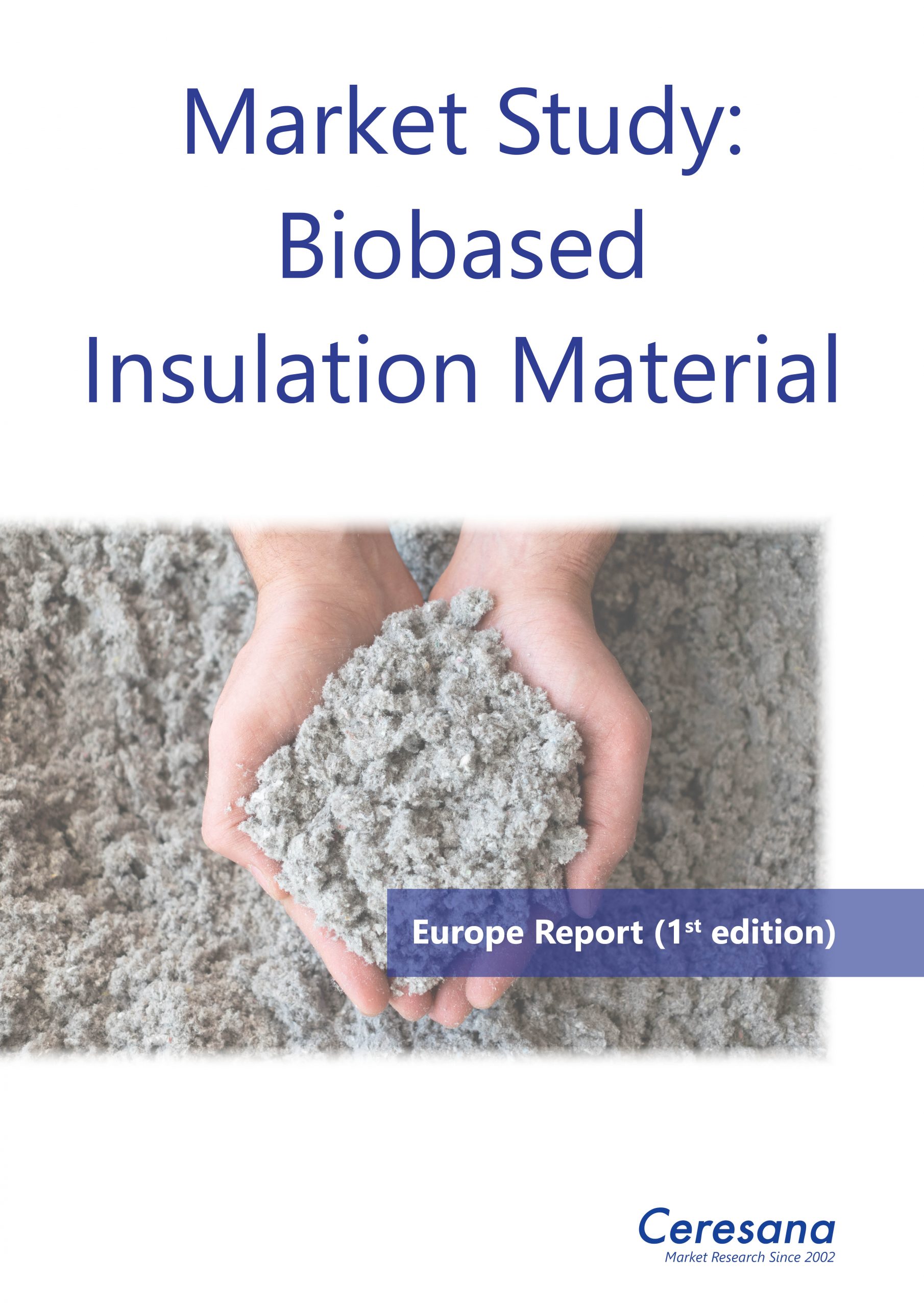Granulated cork, mats made from hemp, fleeces made from sheep’s wool or even blown-in cellulose flakes: Biobased insulation materials are increasingly competing with mineral wool and plastic foam. Ceresana has been analyzing the market for insulation materials used for thermal insulation in the construction industry for 10 years. Now, for the first time, the market research institute is publishing a study specifically on the European market for insulation materials made from renewable raw materials. The new market report expects sales of these „green“ building materials in Europe to exceed EUR 2.3 billion by 2032.
Building insulation saves money and energy
Well-insulated walls reduce the heating energy requirement or the cooling load of buildings – and therefore reduce not only costs but also carbon dioxide emissions. Renewable raw materials such as flax, straw or reed can further improve the energy balance and the „ecological footprint“ of buildings. They are available, for example, with the German „Blauer Engel“ or the Austrian „Österreichischen Umweltzeichen“ eco-labels. The demand for biobased insulation materials is expected to increase significantly over the coming years. Ceresana expects the highest growth rates of 3.4% per year on average in residential construction and slightly less in commercial construction. In many places, the construction of warehouses and logistics centers for the booming online trade, as well as data centers, is a ray of hope for the struggling construction industry. While new construction in Europe is only growing slightly, Ceresana is forecasting growth rates of up to 4% per year in the renovation sector. The energy-efficient refurbishment of residential and public buildings is subsidized by the state. In the European Union, better thermal insulation is one of the focal points of the recovery and resilience plans for the „green transition“ until 2026.
Growing demand for biobased insulation materials
Natural materials are often even more expensive and less known than mineral or synthetic products. In some cases, they have to be specially protected against water, fire and pests. In many places, conservative building regulations and standards still make it difficult to use mushroom mycelium or other innovative insulating materials. Biobased insulating materials, on the other hand, are ideally non-toxic and biodegradable after their usage period, i.e. easily compostable. They can be combined with organic paints, organic wallpapers, organic adhesives and other environmentally friendly building materials. However, „green“ building materials not only score points for sustainability, but also for their physical advantages: Many biobased insulation materials can absorb water vapor from the room air and then gradually release it again. This allows them to act as a moisture buffer and prevent mold. In the event of a fire, wood panels, sawdust and other biobased insulation materials can be more predictable and less dangerous than plastic insulation made of EPS or XPS, which sometimes melt quickly in an uncontrolled manner and produce smoke and toxic gases. As there is no one-size-fits-all solution for all requirements, different materials with specific properties are often combined, for example hemp fibers and supporting fibers made from the bioplastic PLA, straw fibers and flame retardants or sound insulation made from coconut fibers (low-frequency noise) and cork (high-frequency noise).
Current Market Study „Biobased Insulation Materials – Europe“ (1st edition):
Chapter 1 of the new study provides a comprehensive analysis of the European market for biobased insulation materials – including forecasts up to 2032. The development of demand and revenues is detailed. Demand for biobased insulation materials is also split by the individual application areas and further includes the following product types: Wood, Cellulose, other insulation materials. Chapter 2 examines the market for biobased insulation materials in 14 individual countries: Consumption and sales of biobased insulation materials are shown in each case. In addition, demand is broken down into the segments: new construction, renovation – as well as residential construction and commercial construction. Chapter 3 provides useful company profiles of the most important producers of biobased insulation materials, clearly arranged according to contact details, revenues, profit, product range, production sites and profile summary. Detailed profiles are provided for the 41 most important manufacturers, such as GUTEX Holzfaserplattenwerk H. Henselmann GmbH & Co. KG, Hunton Fiber AS, Fibris S.A., Steico SE, Soprema S.A., and Synthesa Chemie Gesellschaft m.b.H.
Further information about the new market study „Biobased Insulation Materials – Europe“ (1st edition): https://ceresana.com/en/produkt/biobased-insulation-material-market-report

About Ceresana
As one of the world’s leading market research institutes, Ceresana specializes in the chemicals, plastics, packaging, and industrial goods sectors. Special focus areas are bio-economy and automotive / mobility. Since 2002, companies have benefited from high-quality industry analyses and forecasts. Over 250 market studies provide more than 10,000 clients around the world with the knowledge base for sustainable success. More about Ceresana at www.ceresana.com
Ceresana
Mainaustrasse 34
78464 Konstanz
Germany
Press Contact: Martin Ebner, m.ebner@ceresana.com
